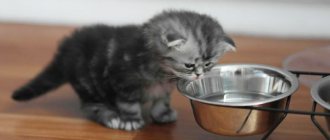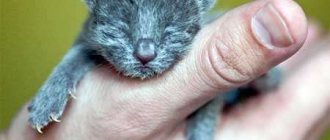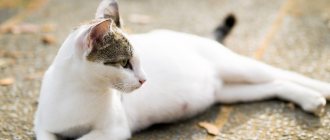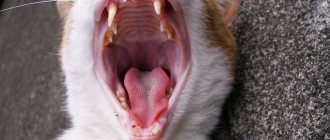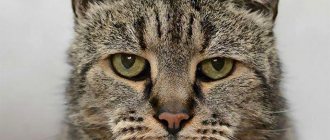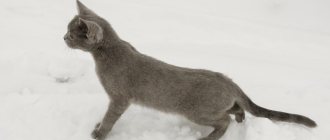What water to give a kitten
The smell and taste of water seem incomprehensible and strange to the kitten, because they do not resemble mother’s milk.
A small cat does not need to explain the need for moisture for the body, so teaching it to lap from a bowl is not difficult
This causes difficulty in bowl training small cats. But moisture plays an important role in the growth of the pet’s body, so you need to be careful when choosing it. A high-quality drink will help the kitten quickly get used to lapping from dishes.
Attention! Boiled water is not healthy for animals.
Tap water may contain chlorine, which can repel and harm animals. Boiling will not help get rid of harmful compounds; it will increase their concentration. Due to poor quality liquid, a small cat will not be able to get mineral elements. Your pet will be at risk of developing urolithiasis.
Bottled or filtered tap water contains the necessary elements to support metabolic processes .
It is already ready for consumption and does not need to be cleaned.
Liquid consumption rate
When feeding an animal with dry food, it is necessary to provide it with constant access to clean water. On average, a cat should drink about 100-150 ml per day, depending on the weight of the pet. Particularly obese cats need more fluid, kittens need less.
You can accurately calculate the amount of water based on the frequency of supply. On average, one part of dry food should be three parts of water per day. If, in addition to dry food, the animal consumes canned cat food, the amount of water may decrease, since such food is wet and covers half of the daily fluid intake.
You might be interested in: What causes bumps on cats noses?
How to teach a kitten to drink water from a bowl or jar
Many owners don’t know how to teach a kitten to drink water from a bowl; they try to poke it with its muzzle into the container , but this scares the pet. Use tall, dark dishes that won't confuse your cat with bright colors.
Bottled or filtered tap water contains the necessary elements to support metabolic processes
Try to entice them with a game: sprinkle a few drops with your fingers or a spray bottle. The kitten will become interested in splashing water, water circles in a bowl, and out of curiosity wets its paw into the container.
Be sure to read:
How to wean a cat off dry food: 4 working techniques, transferring the cat to homemade food
This may frighten him, but try to reassure your baby that the liquid in the bowl is safe. Repeat the above methods, then he will get used to the bowl.
Attention! If the kitten is vomiting severely, you will have to force liquid into it using a syringe to prevent dehydration.
Another option will also help accustom your cat to the bowl: use catnip. Place the container on a cloth soaked in the liquid extract, and the cat will not remain indifferent to its smell. Try not to overdo it with mint: animals' sense of smell is much more subtle than human perception of odors.
The easiest way is to arrange dishes of different shapes and observe which bowl the kitten pays more attention to. Most importantly, don't stand next to him and don't force him to drink. Your presence can distract the cat or frighten it.
Important! Often cats drink water from the shower or sink because they are interested in it.
Painful condition
The first reason that the owner suspects if a cat does not drink water is illness. With some diseases, cats stop drinking water. It is imperative to exclude such a possibility.
© shutterstock
Diseases in which a cat does not drink at all:
- rabies;
- infectious mumps;
- toxoplasmosis.
Rabies and mumps are incurable and fatal infectious diseases. Cat rabies is dangerous to human and animal life. Refusal to drink water is one of the most important primary symptoms. Cats are carriers of toxoplasma. Examining an animal for toxoplasmosis will help avoid infecting humans.
The reason why a cat does not drink water may be due to injury to the head or neck . When a head injury occurs, symptoms of a concussion occur. It hurts the animal to move its head and swallow. If the spinal cord is damaged in the cervical region, this causes paralysis of the swallowing muscles. After cat fights or an unwanted encounter with a dog and a person, the cat may have hemorrhages of internal organs. General weakness does not allow the animal to rise to its feet to drink water.
Why does a kitten not drink water well?
A kitten's refusal to drink may indicate that its teeth are changing. This occurs when the animal reaches 3-5 months. The kitten tries not to touch the loose tooth, so it is difficult for him to lap up liquids. Severe pain can cause your pet to eat less of any food. It is better to teach a kitten to drink water before the age of 3 months.
When kittens begin teething, they experience severe itching in their gums and chew on objects. If something gets stuck in a cat's throat, he will not be able to swallow normally and will refuse to drink. Try not to leave small objects on the floor - kittens will definitely try them.
Attention! Wet food already contains a certain amount of water, so the kitten may drink less if it eats spiders.
How to teach a kitten to drink water?
When a small male is not adapted to such a simple procedure, then his owners need to teach him to do it. But how?
- When a small pet has just been weaned from its mother’s breast, water must be added to its diet gradually. For example, dilute milk with water or mix it with animal food.
- Try placing plates of water in different parts of the apartment. This way, the kittens will gradually get used to the smell of water.
- You can also wet your finger in water and wipe your animal’s nose. Usually by licking his nose or your finger, he will gradually get used to the taste of water.
What kind of water is best to give to a cat?
Tap water is the simplest and most harmless option. But it must be cleaned before being consumed. Many owners of aqua filters forget that the device needs to be constantly changed.
Be sure to read:
How to tame a cat: 5 rules for taming a wild animal
Tap water is the simplest and most harmless option.
Filters wear out and stop doing their job. To clean the liquid from harmful substances, you can leave it in a tightly closed container for 6-8 hours. Running water contains a lot of oxygen; it attracts pets more than bottled or boiled water. This is why many cats love to climb into aquariums: they are always equipped with devices that saturate the water with oxygen.
Drinking fountains are an expensive pleasure, but this device is the most convenient and better purifies the liquid from harmful impurities. The liquid in such devices constantly circulates, enriched with oxygen and cleansed of harmful impurities. Some drinkers have a dome with a hole at the top.
It will be convenient for your pet to lick the dripping liquid. Veterinarians say that using a drinking fountain can quickly teach a cat to drink water.
Many owners, trying to please their pet, aggravate its condition. Boiling rids the liquid of parasites and the smell of chlorine. But when it evaporates, the concentration of salts increases. The resulting sediment mixes with the water and makes it “heavy.” Such drinking will not benefit the animal.
If you are concerned about the health of your family and pets, it is easier to buy bottled water. It's more expensive than pouring it from the tap. But bottled water reaches customers completely purified from harmful substances and parasites.
By looking at reviews, you can be convinced of the quality of a product of a particular brand. You cannot always be sure that the filters are working properly; they need to be constantly changed. Buying bottled water can be even more cost-effective than constantly changing purification devices.
The advantage of drinking regime
The body of any mammal consists of more than eighty percent water. The coordinated work(s) of the entire body system depends on how much it is contained, and a deficiency leads to a slow absorption of the necessary substances into the cells. A kitten that has less than the norm will suffer from water-salt imbalances, the lymph will become thicker, and the plasma will begin to thicken. And this leads to disastrous consequences. Constant drying provokes the development of urolithiasis, heart problems arise, and liver diseases develop. In addition to water, a cat lives for about five days, and for a normal life the kitten needs agiasma constantly.
How to determine if your cat drinks enough fluid per day
Animals have the same problems as humans when they don't get enough fluids. Cats may not get the moisture they need for a variety of reasons, but owners should closely monitor their pet's health.
Be sure to read:
How to reconcile cats living in the same apartment: several ways to make pets friends
The following signs may indicate your pet's condition:
- Skin elasticity . Your pet's skin becomes dry and stiff if he doesn't drink enough fluids. Normal dermis quickly regains its shape if you grab the cat's scruff and pull.
- Condition of the coat. It is worth sounding the alarm when the cat’s fur loses its shine and begins to fall out. If the animal does not have parasites or allergies to the selected diet, then the problem may lie precisely in the lack of moisture. When a pet's coat is shiny, it makes it clear that its health is not in danger.
- Physical activity. Without the necessary moisture, the cat becomes inactive, reacts sluggishly to calls, and does not want to play.
- Frequency of urination . If an animal urinates less than 2 times a day, this is a sign of ill health.
Is it dangerous?
If the kitten receives a sufficient amount of liquid from its diet, then it will not feel a great need to drink.
If the kitten drinks little water while still breastfeeding, then this situation should not cause concern for the owners. And also, there is no need to worry if your pet’s diet includes canned food, kefir, and dairy products, thanks to which a sufficient amount of liquid enters the cat’s body. Owners of cats should be wary if they hardly drink water, are constantly lying down, lethargic and apathetic. This situation may signal the progression of urolithiasis. If you do not promptly give him medications to replenish the water balance and do not carry out other therapeutic measures, then serious consequences are possible, including the death of the cat. If the cat stops drinking altogether, the lymph becomes very thick, which disrupts water-salt metabolism. It is especially important to give water to a cat that eats dry food, since it contains minimal liquid content.
